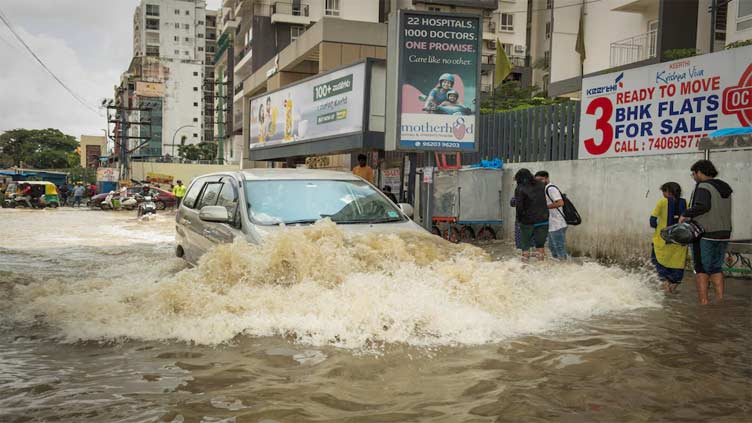Rain batters India's Bengaluru, renews haphazard expansion concerns

World
Bengaluru has become hostage to the monsoon rains in recent years
BENGALURU (Reuters) - Schools were shut and people worked from home in India's tech hub of Bengaluru on Wednesday after the heaviest rains in nearly three decades again brought the city to a standstill.
Bengaluru has become hostage to the monsoon rains in recent years, with flooded roads, uprooted trees and choked drains becoming an annual feature in the city of 14 million.
This year, a weather station in the northern part of the city recorded rainfall of 186 mm (7.3 inches) on Monday, the highest in a single day recorded in the city since 1997.
As of Tuesday, Bengaluru had received 211.7 mm of rain this month, nearly double the rain normally seen during this period, according to data from the India Meteorological Department.
The resulting disruption has renewed concerns about unplanned development of "India's Silicon Valley", which is home to thousands of startups and global companies from Walmart to Alphabet's Google.
"If it rains for even half an hour, flooding happens," said Saurabh Kumar, a Wipro employee who resides in an apartment complex that uses tractors to ferry residents to and from the entrance when it rains.
About 18 km (12 miles) from the city in Babusapalya, the heavy rains knocked down a building under construction, causing the death of five workers.
The local government has urged all private companies to let their employees work from home after the weather department issued an alert through Thursday, warning of continued rainfall.
"Water is coming into my house from my kitchen chimney," said Sadhana Subramanian, 40, a resident in the Banaswadi locality who has been allowed to work from home. "I get scared when it rains too much because then it means that there'll be no electricity."

Companies including Deloitte, Mercedes Benz R&D India, and Nokia have encouraged employees to work from home.
Some residents such as Joshey John, who must commute to work, lamented the "lack of vision in developing the city".
He said he decided to buy a motorcycle after taking about two hours to cover 11 km (seven miles) by car during the rains.
WHEN IT RAINS, IT FLOODS
Bengaluru, once dubbed a "pensioner's paradise" for its moderate climate, has seen its population explode in recent decades as it became a tech hub, but its infrastructure has failed to keep up.
"Whatever (development) is happening in our city is unplanned. So, the environment, the drainage networks, the wetlands are being destroyed," said Sandeep Anirudhan, founder of activist group Coalition for Water Security.
Over the last four decades, the city has lost 88% of green cover, while areas covered by concrete have increased 11-fold, according to studies by the Indian Institute of Science.
That has led to low infiltration of rainwater, making more than 85% of Bengaluru vulnerable to flooding, according to a study published in the Journal of Landscape Ecology.
The problem is compounded by structures built on what used to be lakes, where water would earlier percolate during rains, said Veena Srinivasan, executive director at environment-focused non-profit organisation WELL Labs.
Additionally, a network of drains that helped connect lakes and were meant to capture rainwater, are blocked with solid waste in several areas, resulting in overflowing.
"More work is required to be done by the city's municipal body for de-clogging and widening storm water drains. That will help reduce instances of such flooding," a senior disaster response force official said.
The official declined to be named as they are not authorised to speak to media.
Bengaluru's civic body did not respond to a Reuters' request for comment.


